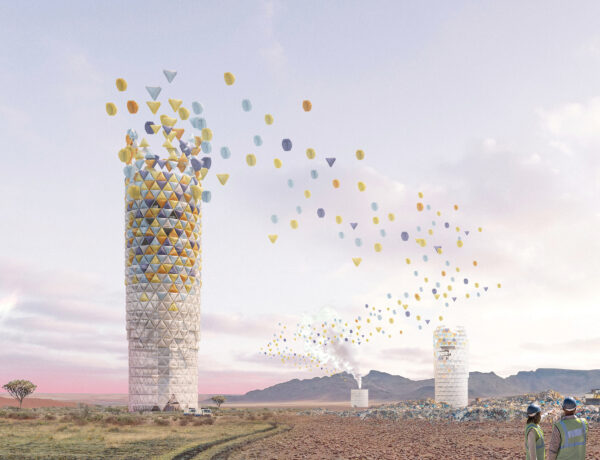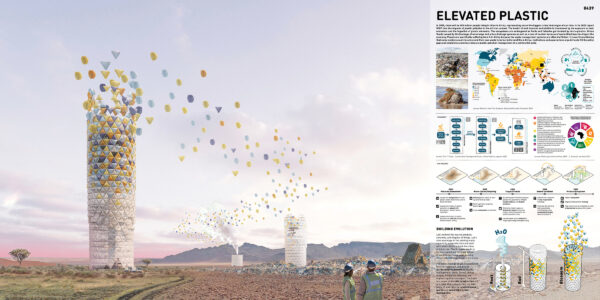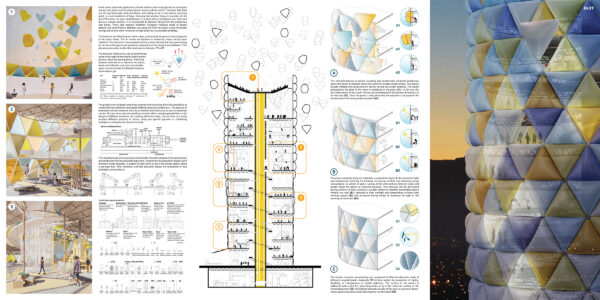Honorable Mention
2023 Skyscraper Competition
Anissa Le Scornet, Andrea Battistoni
United States
In 2050, there will be 400 million people living in cities in Africa, representing one of the biggest urban challenges of our time. In its 2022 report WWF lists the impacts of plastic pollution in the African context. The health of both humans and wildlife is threatened by the exposure to toxic emissions and the ingestion of plastic elements. The ecosystems are endangered as fields and fisheries get invaded by micro-plastics. Urban floods caused by the blockage of waterways and urban drainage systems as well as a loss of tourism because of waste filled beaches impact the economy. People are specifically suffering from it in Africa because the waste management systems are often inefficient. It is worth mentioning that some western countries also send their own waste to be buried in landfills in Africa. Institutions and associations urge Africa to fill the policy gaps and establish a common vision on plastic pollution management at a continental scale.
Let’s rethink the way we produce, consume, and dispose of things. Let’s take advantage of the existing waste caused by overproduction and start with what’s there to build the cities of tomorrow. Plastic waste needs to be intercepted and recycled before it reaches rivers and seas, causing irreversible damage to our ecosystems. Politicians need to adopt a coordinated life cycle approach and give an institutional framework to plastic management: study, assess, define targets, build a methodology and impose regional strategies. The tower is a model of circular construction and is a place where democracy can take place. It advocates for environmental justice and sustainable urban development. In the tower, scientists, politicians, climate activists and locals join forces to imagine and put into action a world where plastic waste could be useful.
The urban and life cycle approach of the tower starts with a state of play process. The first step is to assess the composition of local plastic waste that will be used to build the tower. As the collection of the plastic waste goes on, land previously polluted will open and start a regeneration process. The priority is to first build the recycling plastic plant and to recruit the local community. The rest of the tower is then built from the recycled plastic into parametric inflated facade modules and a diagrid structure. The completion of the tower will culminate with the opening of a modern agora, a democratic space to discuss targets and strategies for the plastic pollution crisis. The tower will be a worldwide emblem of recycling strategy and opportunity. The constant process of plastic recycling and constructive elements production allows the tower to produce materials useful for nearby constructions. The panels already inflated with pressured air can be turned into steam balloons. The steam produced by the plant in the tower is canalized in the panel. In this way the hot temperature of the steam inflates and ultimately lifts the balloon directing it to its next use. Once the panel is fully detached, the operators can prepare the installation of the newly produced panel. As the balloons pollinate the territory with sustainable initiatives by using renewable energies (wind and steam), the tower will extend into a network of eco-responsible buildings, inhabited to avoid urban sprawl as population grows. Little by little, plants and animals will thrive in a reborn ecosystem!

















